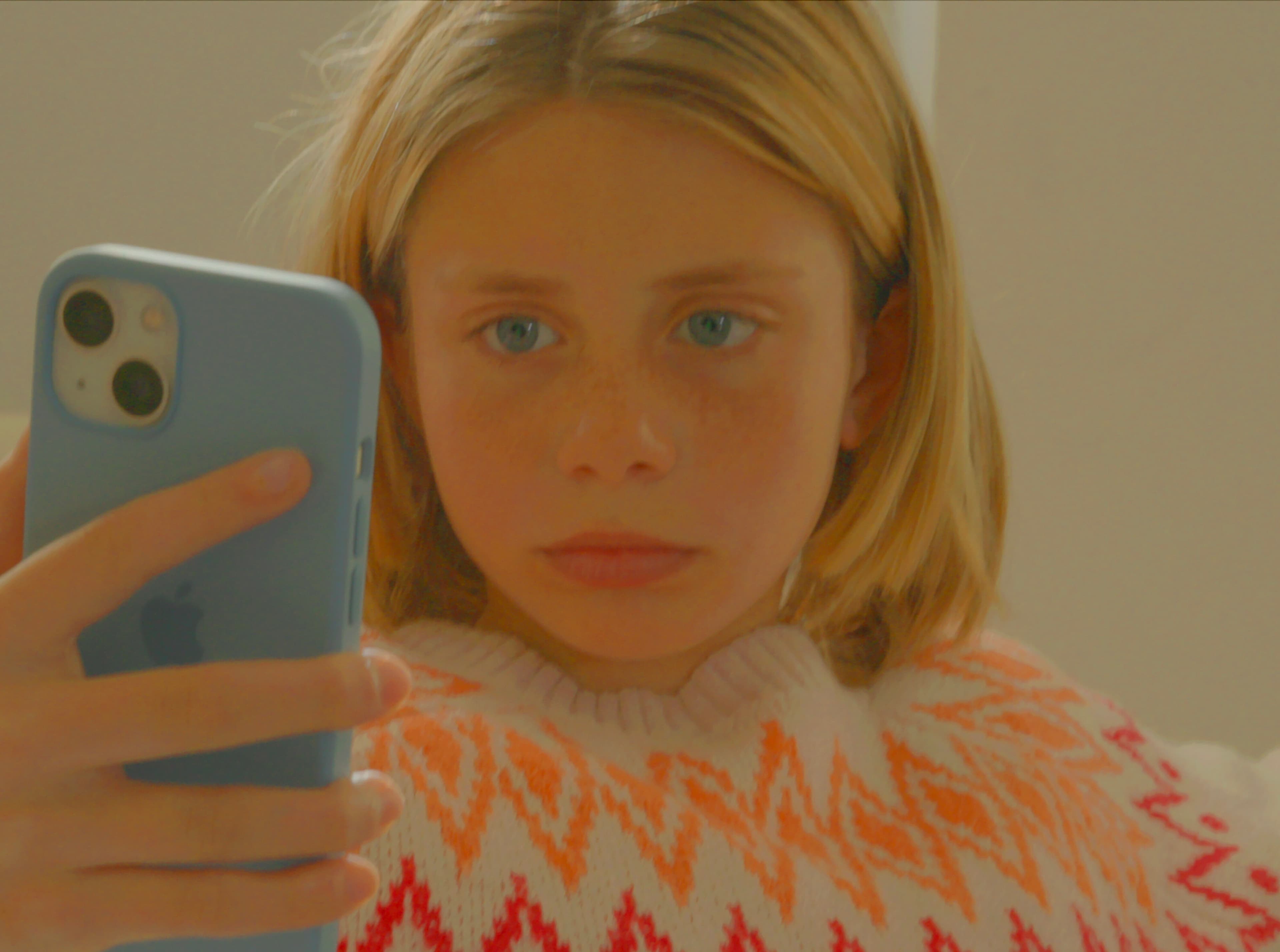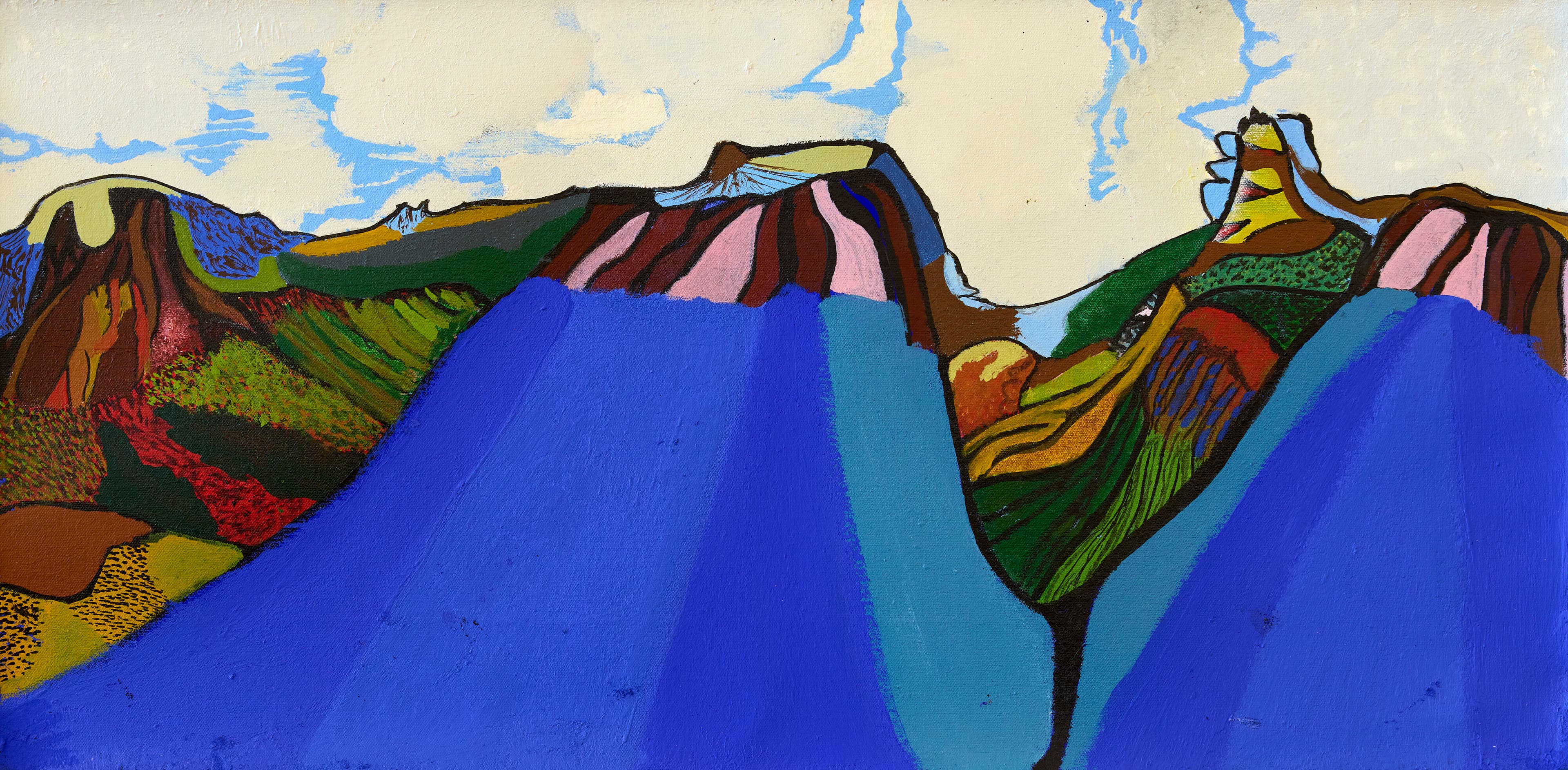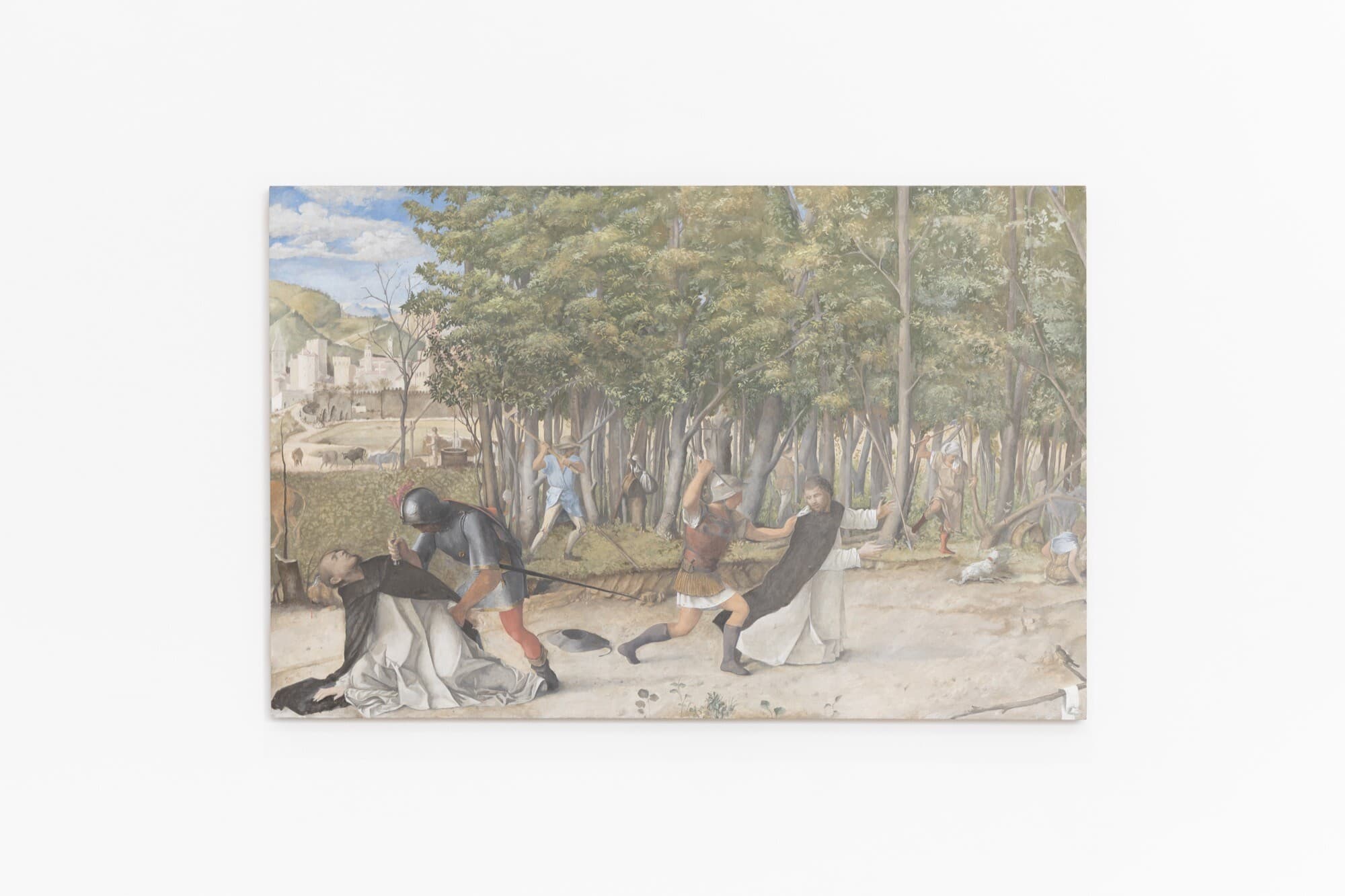Adrián Villar Rojas: The End of Imagination
Tom Melick and Heather Anderson
A person standing in a storied place will, without much prompting, imagine it as it once was. A ruin is rebuilt in the mind; a childhood home is conjured where a new house stands. The imagination, set in motion by a place, historical remnant, or artefact, rebuilds what has passed.
And so this is how an old oil bunker, long ago drained of its contents, begins to fill again in our minds, slicking our throats and lungs with petrol. We are talking now about the Tank—the new subterranean exhibition space at the Art Gallery of New South Wales. A 2,200 square metre decommissioned oil bunker, it was built during the Second World War on orders from the British Admiralty, which was concerned about the lack of resources in the region if Singapore fell to the Japanese (as it did in 1942). A friend had visited the space just before it was cleaned up for art and described it as dark, dank, and eerie; iridescent oily pools were still on the ground and roots from ficus trees had snuck in through cracks in the concrete. A reclaiming of sorts, the roots searching in the engineered void.
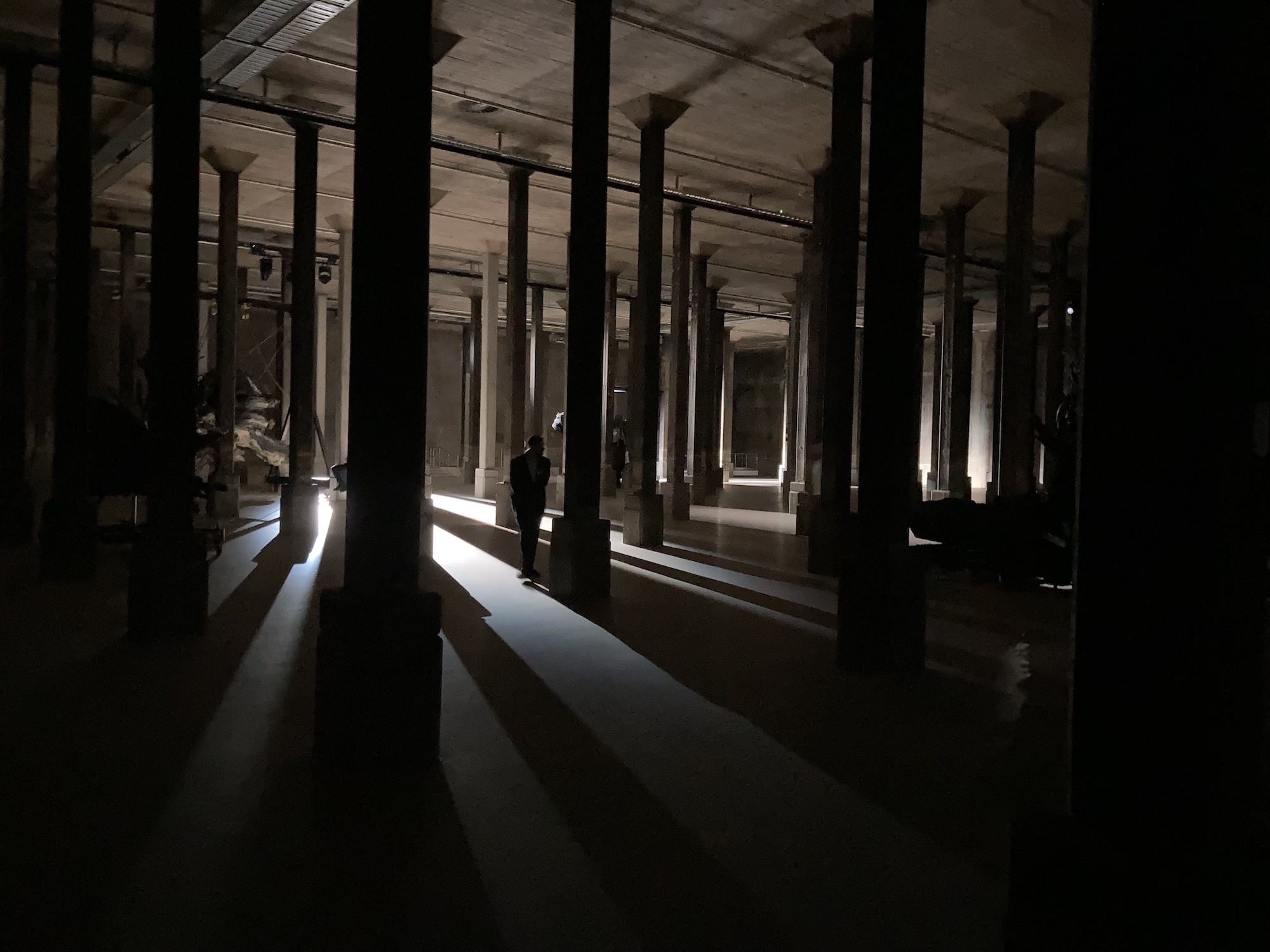
To get down to the Tank you descend a large white metal staircase which penetrates the darkness like an auger drill bit. This is the only architectural modification to the space, though its presence is felt throughout. It’s been decades since oil was pumped across the bay to the nearby graving dock, but the many columns holding up the ceiling are exactly as they were when the concrete was first poured. These columns divide the space and your field of vision, meaning you’re always aware of being below ground, aware that you’re in what was once a container, a storage facility. In this way, the Tank’s history asserts itself. And yet we are also reminded (by typical museum warnings, “do not touch” instructions, and that glowing spiral staircase) that this place is somehow, now, temple-like. The Tank therefore joins a club of “reactivated” twentieth-century utilitarian architecture, whereby contemporary art becomes an effective way to fill the cavities left by war and abandoned industry.
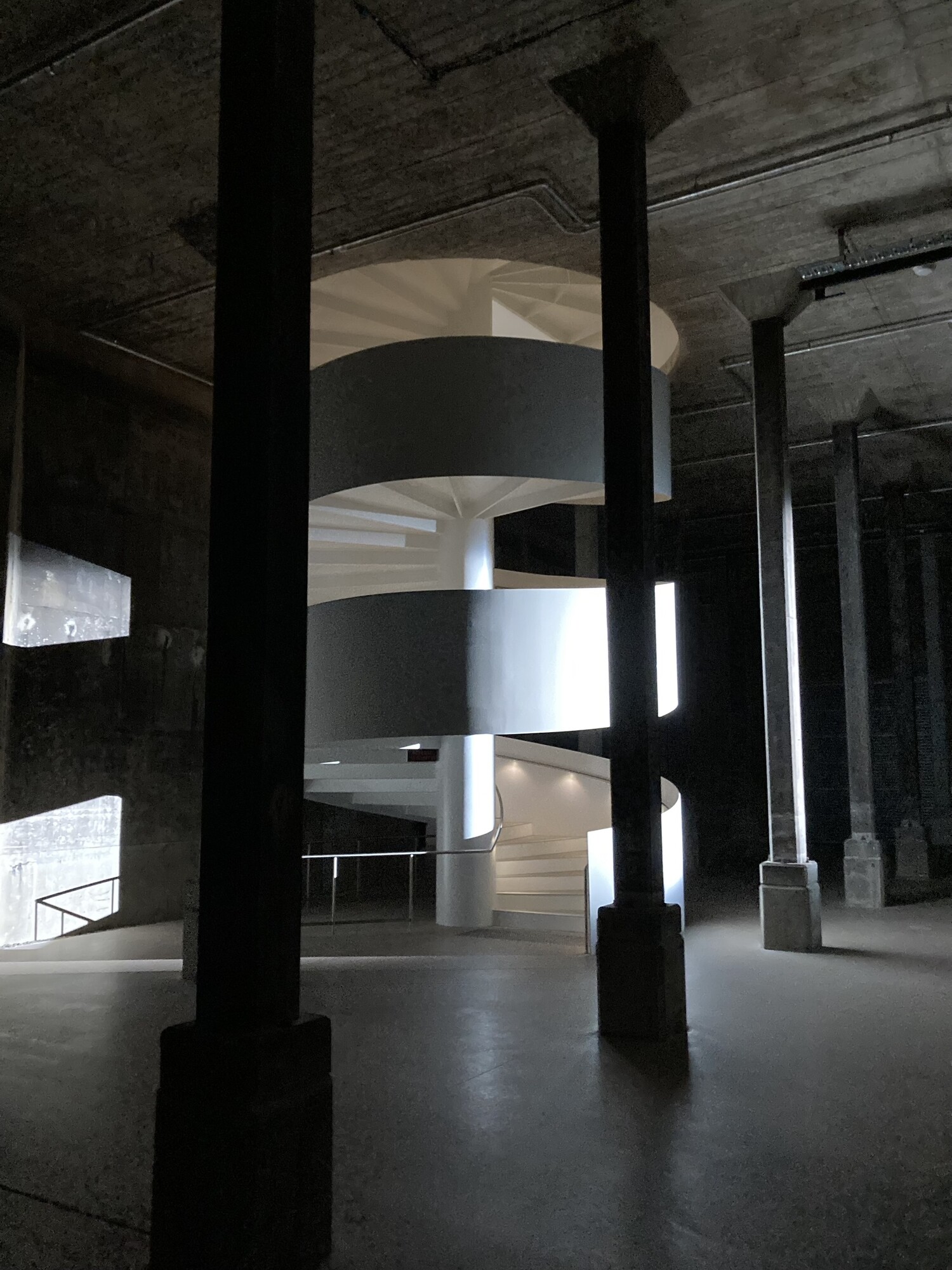
For the Tank’s inaugural exhibition, The End of Imagination, the Argentine-Peruvian artist Adrián Villar Rojas has further dramatised the site with lighting and sculpture. The lights move along tracks installed on the ceiling, intermittently illuminating five enormous and severe-looking objects, which are each suspended and supported by their own unique black metal derrick. On the gallery’s website we read that the lights “operate as sentient beings seeking, surveying, locating, following their own paths and patterns, changing them according to their own needs and will, not ours.” This curatorial text sparked our first set of unspooling questions. What are the needs of the lights? Why is the human gaze subordinated? What does their sentience tell us about the work and its location? Are humans the intended audience? And, if not, what role are we, visitors to the Tank, playing? Indeed, are we still in the Tank or have we entered a speculative time and space? We never entirely resolved these questions, which is perhaps why we found ourselves at times struggling to navigate and participate in the exhibition. This foretells a more general and persistent problem we encountered: the work simultaneously invites and bars us from knowing the speculative worlds upon which it is based. This seems to be a fundamental conflict in so much contemporary art, where being knowable is resisted in favour of sprawling ambiguity.
The exhibition is grounded in a series of speculative fictions that predate and frame the sculptural forms that you see in the space. In order to produce the sculptures Villar Rojas and his team developed an amalgam of software systems called the “Time Machine” to generate hypothetical virtual worlds that run on different times to that of Earth. Into each world he placed a virtual object and subjected it to the politics, environments and histories indigenous there. This permitted Villar Rojas to see how immense, non-human scales might ravage these objects. Once the software had run its course, the virtual objects, weathered by their alien experiences, were downloaded and built—translated into the material sculptures that now populate the old bunker.
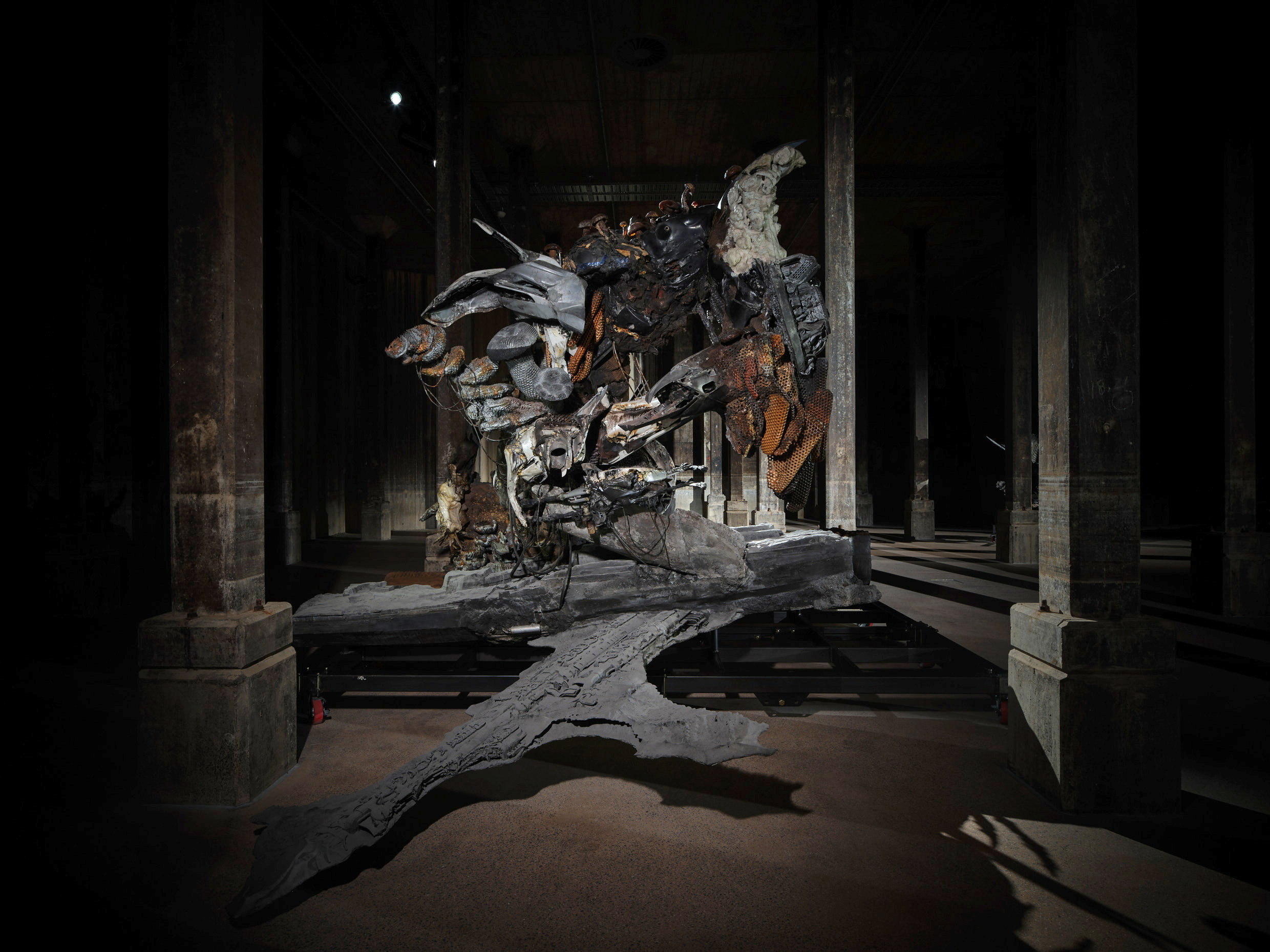
In the Tank, the sculptures (also called monuments or objects) are never exactly visible in their entirety—the lighting reveals and conceals aspects of each mass as gallery attendants point flashlights at your feet and face, presumably to make sure you don’t trip over any pipes or hit your head on a twisted bit of rebar. Think of a film set for a body horror or post-apocalypse movie. Or think of those rock-like lumps they pull out of sewer systems, known as fatbergs, where organic and inorganic matter is indistinguishable. Or think of crumpled and melted ruins pulled from earthquakes or bombsites. (That we can marshal these comparators is telling—alien or not, we’ve seen this ruination and wastage before.) Standing in front of one of these sculptures you might see car and plane parts, pipes, tree roots, fungal forms, mangled plastics, scorched wood, blasted rock, clay and other unidentifiable debris in colours of silver, rust-brown, black and fleshy pink. It’s all so cinematic, sinister, and big. Looking at the sculptures, then, it’s clear that their virtual counterparts have been put through the proverbial wringer. And as we looked at these objects, we became curious why kinder, gentler, smaller or counter-intuitive worlds were not modelled, and what that tells us about the limits of imagination, or about how time can be conceived and modelled beyond the obvious pressures of the present. Why, for instance, if each of these objects has been subjected to their own specific virtual thought experiment—their own world—do they end up looking so similar? We were left wondering if this was the point, the literal end of imagination, the eradication of alterity, and the acceptance of generalised entropy, decay, and neglect.
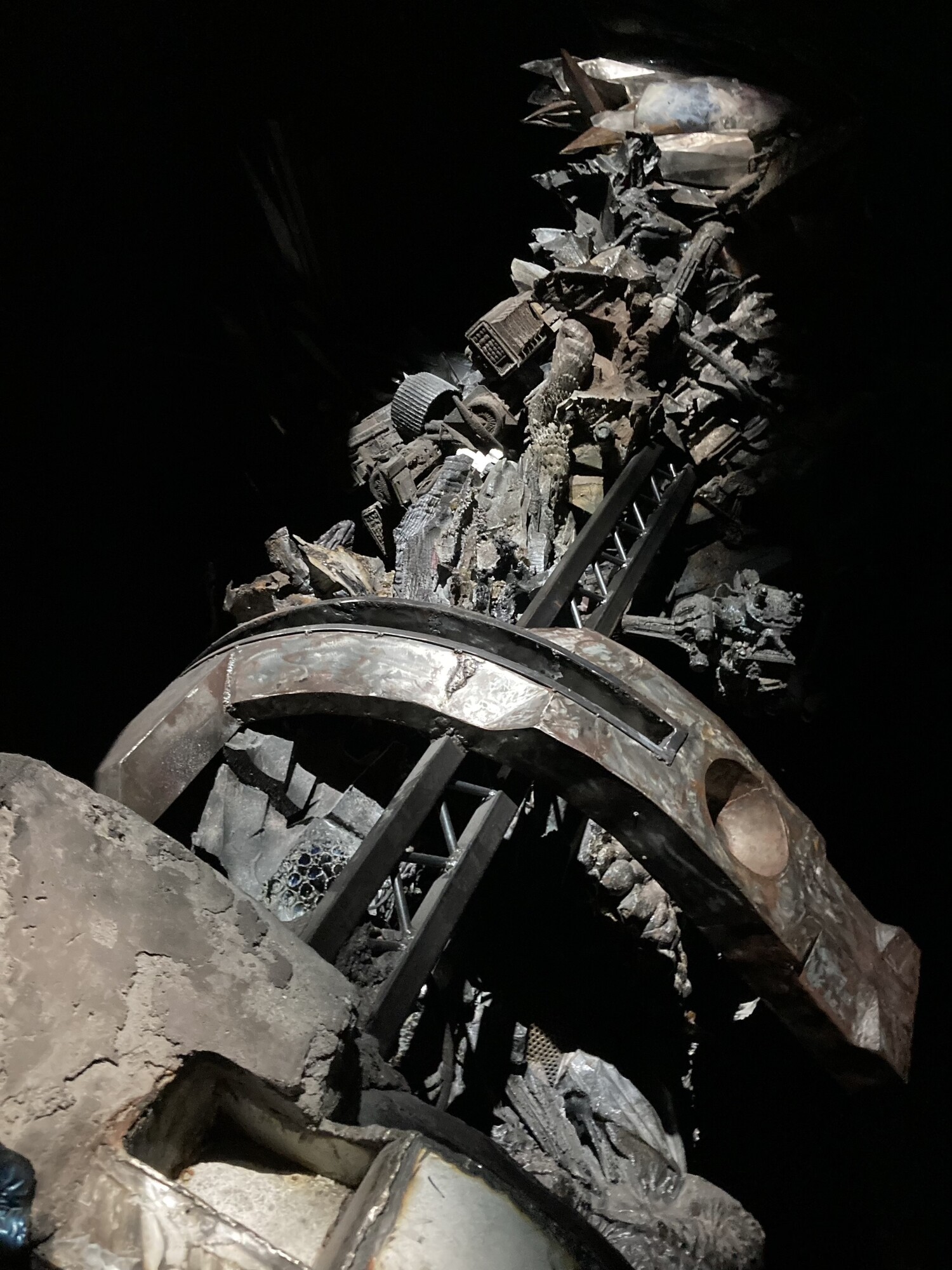
In earlier exhibitions by the artist, playful materiality and ephemerality are crucial features of the work. In his 2015 exhibition Fantasma at the Moderna Museet in Stockholm, for example, Villar Rojas presented small sculptures made from sneakers, bread, fruit, vegetables, dirt, toys, cutlery and crustaceans that remained incomplete and fragile, like half-finished metamorphisms. This scale was domestic, what can be picked up and carried in the pocket, what is found in the ubiquitous “stuff” drawer of the kitchen. But the size of the Tank obviously came with its own set of perceived restrictions, and spectacle won out over more nuanced entanglements.
So much for imagination—what of history? We kept coming back to the accompanying curatorial text, which includes a series of questions that frame the exhibition while raising more:
What monuments might be created to commemorate the end of postcolonial struggles for independence on the Moon’s Sea of Clouds in the year 34,340? What would a sculpture that was left in the canyon of the Valles Marineris on Mars for 500 years look like? What is its texture, what remains of its volume? How do you model wind in 7,374,000 BCE?
Despite being so integral to the design and construction of the work, no information is available about the virtual worlds created by the Time Machine software. The 400-plus page artist book—full of images archiving the “making of” and described as a “real-time record, a nest of speculations”—offers no guide for the uninitiated to explore the worlds the work purports to open. Nor does any storytelling accompany the sculptures themselves, furnishing the details of their specific trials or traumas. (Why was one monument toppled? What kind of creatures took up residence in another? Just how strong was the wind in 7,374,000 BCE?) Instead they stand without context, in a place literally stained with its own. As with the role of sentient lights, questions are begged but go unanswered, and not always productively. In particular we were left wondering why the monuments were plucked from their virtual timelines and downloaded at the point we see them materialised in the Tank. Another way of asking this: How did the artist decide when the monuments had reached their end? All this to say, it is frustrating to view a work which simultaneously insists on the historicity of its pieces whilst denying access to that history, or the tools to think within it. Doing so at best mystifies and at worst erases all the ingenuity, innovation and labour we are told went into creating these “intensely detailed” virtual worlds.
We are left to conclude that history does not matter in the Tank, seemingly lost in the translation of immaterial worlds to our material one. When we see the mottled metal, its texture, the signs of erosion, we are not looking at surfaces that have experienced material changes. We are looking at the physical manifestation of virtual experience. Immaterial histories. Like drawing a dream and showing it to the person who wakes next to you. But history, albeit an immaterial one, could still matter if Villar Rojas wanted it to. Instead, these objects arrive to us as surface only, the years or eons flattened. They are monsters that do not call us to learn about them. Visitors to the Tank are cast as archaeologists at the moment of encounter and unearthing. Are the sculptures open to interpretation? Do they still function as monuments, in the sense of marking memory? Or, like the facsimiles of cave drawings at Lascaux in France that reach us through deep time, before “History” began, can nothing more be said about these forms beyond mere description? Maybe. To say more is an act of imagination. And, as we have been told by the artist, this is the end of it even as its provoked.
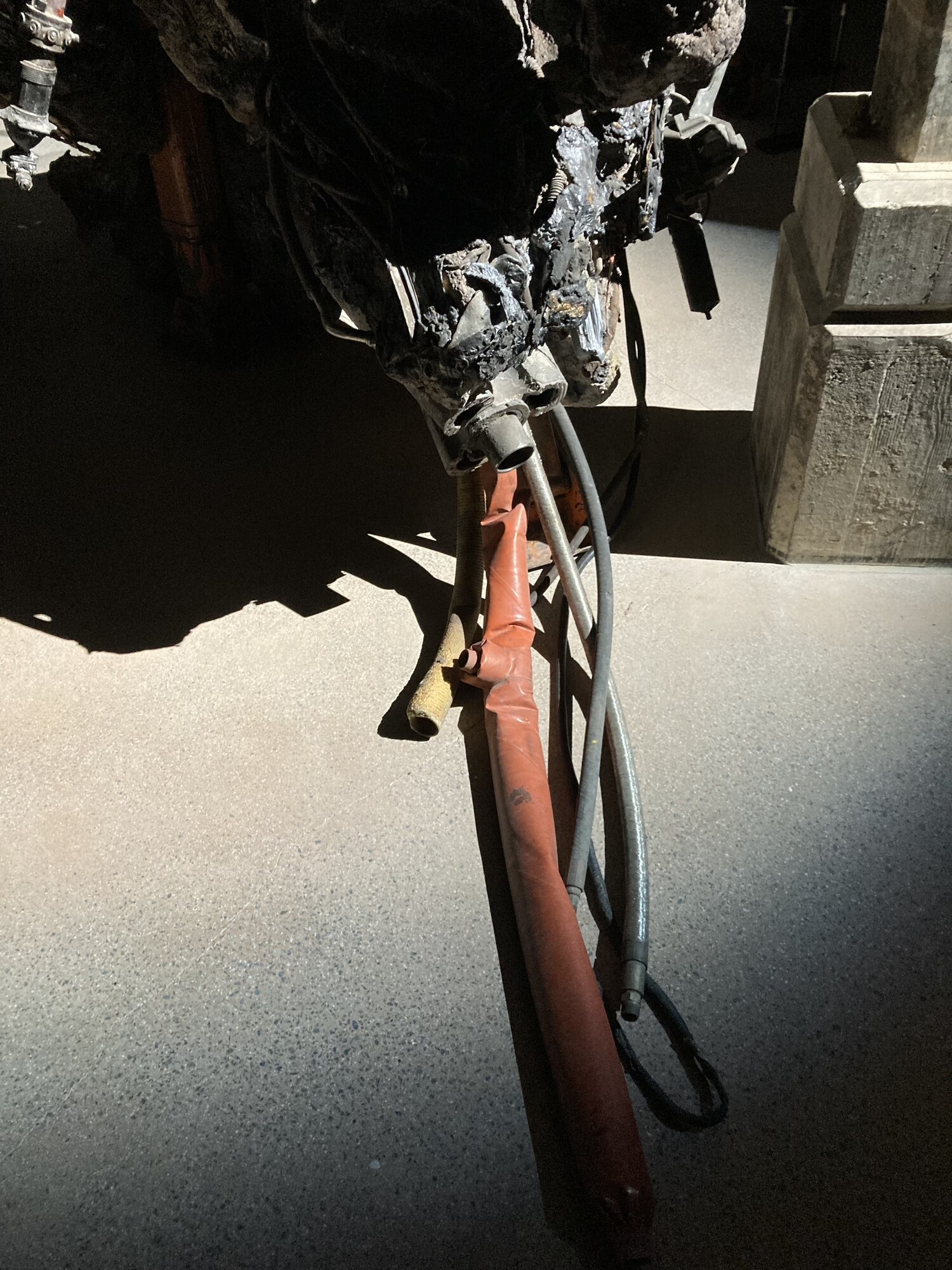
This approach to history, or rather the absence of it, reminds us of geographer-artist Trevor Paglen’s The Last Pictures project (2012). Compelled by the debris of spacecraft that orbit the Earth and may well outlast the human race that built them, Paglen curated a series of images that could function as a kind of time capsule of human life. The images, which, like the Tank’s sculptures, are not accompanied by captions or supplementary information, were placed on a micro-etched disc, itself then encased in a gold-plated shell to ensure their longevity. All this was then launched into space on the communications satellite EchoStar XVI in 2012. The satellite now rests in a graveyard orbit above Earth, situating the micro-etched disc as a future ruin and testament. But what can its images communicate to a distant future that might not include humans? In fact, Paglen’s project seems premised on the impossibility of saying anything universal through deep time. In Paglen’s work, it is the mere gesture of communication across time and space that matters—the content, history itself, is incommunicable at these scales. Perhaps this is at the heart of Villar Rojas’s gesture as well: the cosmic message in the bottle is just the bottle, maybe a broken one, its pieces drifting with no note.
We wonder—and this work did make us wonder—what contemporary art, operating at scales beyond the human, and fixated on “ends” and “lasts” rather than the messy, mutable histories that get us there, reveals about our current historical moment and its preoccupations. What is it that drives us toward these kinds of speculations above all others? Whether by design or accident, the sculptures in the Tank embody the preoccupations of our time, our world, even as they purport to open us to the possibility of others. And in our time, our world, ends come too easy and aestheticised.
Heather Anderson is a writer and is completing a PhD in anthropology. Tom Melick is a writer and editor.
